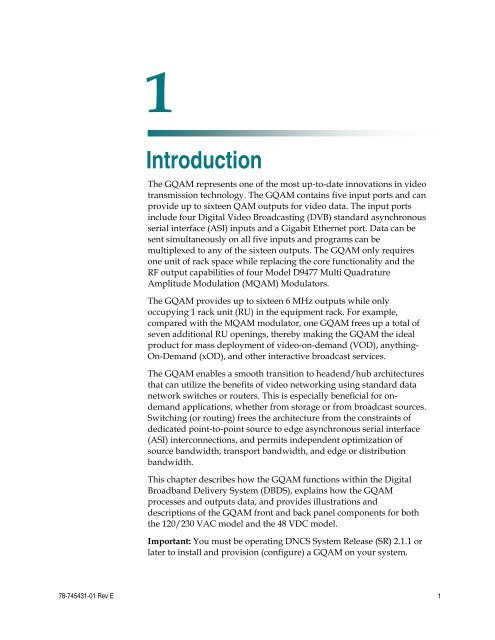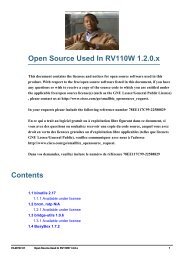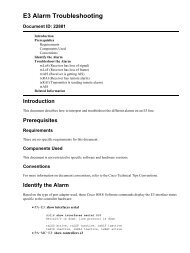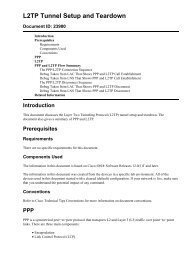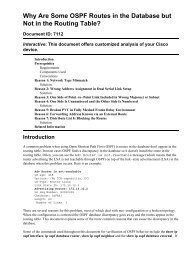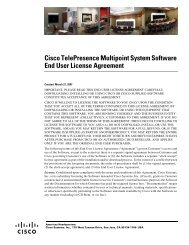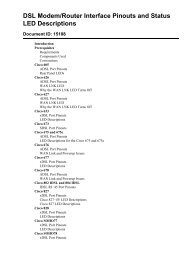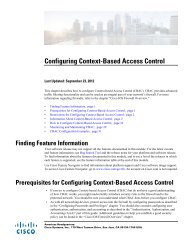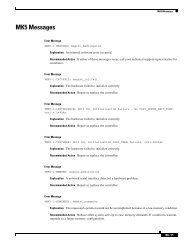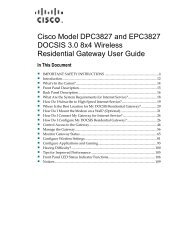Gigabit QAM Modulator Model D9479 Hardware Installation and ...
Gigabit QAM Modulator Model D9479 Hardware Installation and ...
Gigabit QAM Modulator Model D9479 Hardware Installation and ...
- No tags were found...
You also want an ePaper? Increase the reach of your titles
YUMPU automatically turns print PDFs into web optimized ePapers that Google loves.
1 Chapter 1IntroductionThe G<strong>QAM</strong> represents one of the most up-to-date innovations in videotransmission technology. The G<strong>QAM</strong> contains five input ports <strong>and</strong> canprovide up to sixteen <strong>QAM</strong> outputs for video data. The input portsinclude four Digital Video Broadcasting (DVB) st<strong>and</strong>ard asynchronousserial interface (ASI) inputs <strong>and</strong> a <strong>Gigabit</strong> Ethernet port. Data can besent simultaneously on all five inputs <strong>and</strong> programs can bemultiplexed to any of the sixteen outputs. The G<strong>QAM</strong> only requiresone unit of rack space while replacing the core functionality <strong>and</strong> theRF output capabilities of four <strong>Model</strong> D9477 Multi QuadratureAmplitude Modulation (M<strong>QAM</strong>) <strong>Modulator</strong>s.The G<strong>QAM</strong> provides up to sixteen 6 MHz outputs while onlyoccupying 1 rack unit (RU) in the equipment rack. For example,compared with the M<strong>QAM</strong> modulator, one G<strong>QAM</strong> frees up a total ofseven additional RU openings, thereby making the G<strong>QAM</strong> the idealproduct for mass deployment of video-on-dem<strong>and</strong> (VOD), anything-On-Dem<strong>and</strong> (xOD), <strong>and</strong> other interactive broadcast services.The G<strong>QAM</strong> enables a smooth transition to headend/hub architecturesthat can utilize the benefits of video networking using st<strong>and</strong>ard datanetwork switches or routers. This is especially beneficial for ondem<strong>and</strong>applications, whether from storage or from broadcast sources.Switching (or routing) frees the architecture from the constraints ofdedicated point-to-point source to edge asynchronous serial interface(ASI) interconnections, <strong>and</strong> permits independent optimization ofsource b<strong>and</strong>width, transport b<strong>and</strong>width, <strong>and</strong> edge or distributionb<strong>and</strong>width.This chapter describes how the G<strong>QAM</strong> functions within the DigitalBroadb<strong>and</strong> Delivery System (DBDS), explains how the G<strong>QAM</strong>processes <strong>and</strong> outputs data, <strong>and</strong> provides illustrations <strong>and</strong>descriptions of the G<strong>QAM</strong> front <strong>and</strong> back panel components for boththe 120/230 VAC model <strong>and</strong> the 48 VDC model.Important: You must be operating DNCS System Release (SR) 2.1.1 orlater to install <strong>and</strong> provision (configure) a G<strong>QAM</strong> on your system.78-745431-01 Rev E 1


